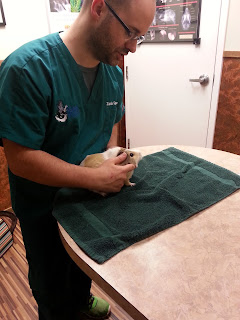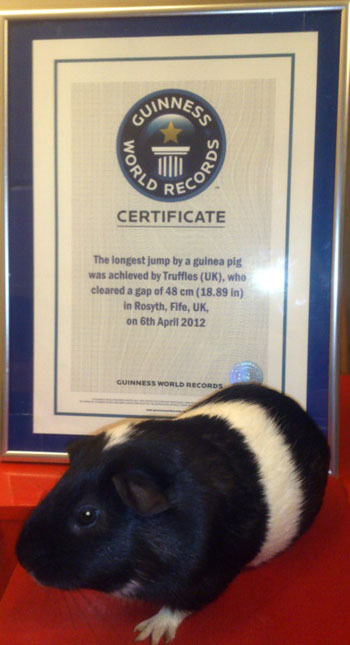I'm two years old, and I belonged to a wonderful family where I was cared for especially by Sophia, a 10-year-old girl who likes soccer and was the best guinea pig owner around. Sophia took amazing care of me, held and pet me, and gave me all the treats and attention I deserve. But when Sophia and her family got a new puppy, she realized that the puppy was going to need a lot of attention and training, and that living in a house with a dog would be hard for me to adjust to. Sophia and her family made the brave decision to do what was best for me and find me a new home, which was hard both for me and for the family. But while I am sad to leave, I am very excited to live with other guinea pigs for the first time.
The humans are planning on introducing me to their other pigs Buffy and Broccoli eventually, but it's important that I first go through a quarantine period. The quarantine period is an important step to take when introducing guinea pigs to each other, because it allows the pigs have a chance to get to know one another through sight and smell. Broccoli seems especially curious about me. It's also very important for ensuring that medical problems aren't spread.
 |
| Hi over there! Can't wait to meet you! |
The vets said that I am in great health, but that I should start taking some vitamin C, and they recommended some shots before I am introduced to the other pigs as a preventative measure. I had a small lump on my back, but the vet said it was just a clogged oil gland, similar to a pimple, and that the vitamin C would help with that.
 |
| Here's me at the vet getting an exam. |
 |
| The vet shines a light in my ears and nose to make sure I'm healthy. |





